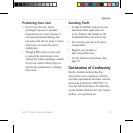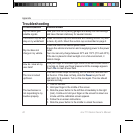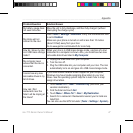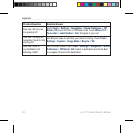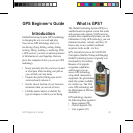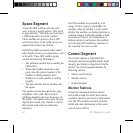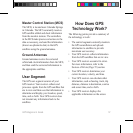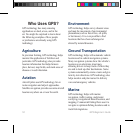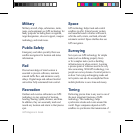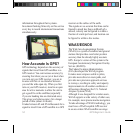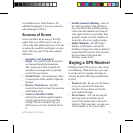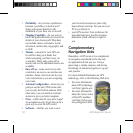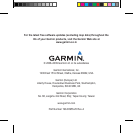GPS Beginner’s Guide 53
Military
Military aircraft, ships, submarines, tanks,
jeeps, and equipment use GPS technology for
many purposes including basic navigation,
target designation, close air support, weapon
technology, and rendezvous.
Public Safety
Emergency and other specialty eets use
satellite navigation for location and status
information.
Rail
Precise knowledge of train location is
essential to prevent collisions, maintain
smooth trafc ow, and minimize costly
delays. Digital maps and onboard inertial
units allow fully-automated train control.
Recreation
Outdoor and exercise enthusiasts use GPS
technology to stay apprised of location,
heading, bearing, speed, distance, and time.
In addition, they can accurately mark and
record any location and return to that precise
spot.
Space
GPS technology helps track and control
satellites in orbit. Future booster rockets
and reusable launch vehicles will launch,
orbit the earth, return, and land, all under
automatic control. Space shuttles also use
GPS navigation.
Surveying
Surveyors use GPS technology for simple
tasks (such as dening property lines)
or for complex tasks (such as building
infrastructures in urban centers). Locating
a precise point of reference used to be very
time consuming. With GPS technology, two
people can survey dozens of control points in
an hour. Surveying and mapping roads and
rail systems can also be accomplished from
mobile platforms to save time and money.
Timing
Delivering precise time to any user is one of
the most important functions of GPS
technology. This technology helps
synchronize clocks and events around the
world. Pager companies depend on GPS
satellites to synchronize the transmission of




